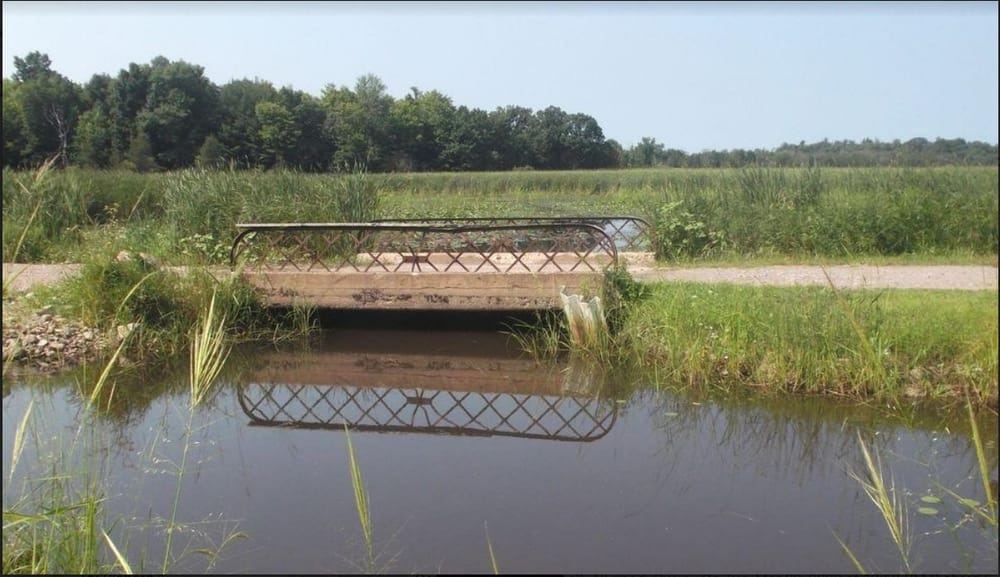Childhood Memories of Bullhead Fishing
by: Manley L. Rusho
The month of April along the St. Lawrence River brings a collage of weather patterns – rain, snow, winds, and the welcome sunshine that heralds the time to fish for bullheads. A bullhead is a primitive looking fish, armed with fins that are capped with very sharp horns, one on each side on top of the head. Fishing for bullheads is a ritual, an almost sacred ceremony.

The first step in this ancient performance was the procurement of bait. But not just any bait; it had to be earth worms. These are not the kind that are purchased today, but were gathered at night, with the aid of a lantern, not a flashlight, but a gas two burner pump-up, with mantles so fragile that a sudden jar could break the mantle. What were they were made of? I have no idea. Some say silk. They came in a package, soft and flexible, and when attached to the lantern with the provided strings, they expanded with the pressure from the pump-up tank burning white gasoline. The light was bright and wonderful – a warm, glowing radiance that enabled you to see and catch your prey – the night crawler.
The recent sunny days had warmed the earth of thawing frost, aided by a warm rain. The night crawlers became easy prey as they lay on top of the ground full length; some would measure eight inches long. Upon catching them, an old gallon-sized coffee can was adequate to deposit the worm. The worms would be transferred to a larger bucket, along with a covering of soft dirt. Many people used newspaper and coffee grounds, however, we stuck to dirt. I never knew which newspaper the worms preferred – The Watertown Daily Times or On the St. Lawrence.
We walked as quietly as we could, because while the earth worms could not actually see or hear, a vibration on the ground would send them back into their holes in less than a second. Being stealthy was vital to our success, and it took a great deal of skill to bag a worm once it had started to reverse into its hole. If you hurried, you would break the worm and broken worms could never be put into the main bait pail; for some unknown reason, it was just never done. There were plenty, maybe thousands, in the small area around the south side of our farmhouse. The dew could be enough but a soft warm rain was the magic key because it drew the worms out of the ground, to our benefit.

The second ritual was the rigging of the fishing poles. These poles were purchased from the local hardware store in Clayton, about 12 to 14 feet in length, and made of hollow bamboo with perfect flexibility and light weight. A heavy cotton cord was attached to the slender end of the pole. The cord was strong enough to anchor a small boat or tow a car and it had to be replaced each year. The line reached only to the bottom of the pole, where most fisherman cut a small hole near the pole butt. Attached to the line was a rather large hook, and about six inches above the hook, a sizable lead sinker was installed. It was slotted with bendable wings and was basically a permanent fixture. Two or three feet above the sinker was where the handmade bobber was attached.

Carved from a piece of soft pine and usually about six inches long, it was a true work of art. Carved almost a point at the thin end, leaving a rounded fat section about two to three inches from where the line was attached. The line was secured with two half hitches into a carved notch, which made the bobber adjustable to the depth of the fishing spot. As for the hole in the butt of the pole, that was where you secured the large hook for transport.
A true fisherman was not afraid of anything that mother nature could inflict upon him – rain, snow, and extreme cold were endured with relish. Just to be fishing after the winter’s hibernation was a relief. Many a cold and often freezing night would be spent fishing – huddled around the warmth of the gas lantern and with frozen fingers, attempting to bait the hook with night crawlers. If you were lucky, you would be rewarded with a few fish. Then on those nights when it all came together, you would fill your pail, and ah yes, you could tell your fish story without embellishment (however, being a true fisherman, you never do).
To clean a bullhead, it was necessary to avoid the horns. Sliding your hand so that you grasp the fish between the side horns, making a quick cut with a sharp knife along the spine and down each side, then changing the knife for pliers made for skinning a fish. To cook and eat, you dusted it with a light cover of flour, salt, and pepper and then fried to a crisp in real lard. Even kings did not eat as well as we did! It was a wonderful break from the usual meal of bacon, eggs, and oatmeal. Thinking of bullheads for breakfast, to this day, makes my mouth water. The taste of those fish, in the early morning mixed with my mother’s homemade bread that was cut so thickly and spread with fresh butter (made from our own cow’s milk – milked by hand), still lingers in my mind and maybe I can still taste it too. As for the aroma of frying bullheads – that simply cannot be put into words.
By Manley L. Rusho
Manley Rusho was born on Grindstone Island nine decades ago. Last year, in 2021, Manley started sharing his memories with TI Life. (Manley Rusho articles) This Editor and his many friends wish him continued good health and we thank him for sharing - as the life and times on Grindstone Island are special and should never be forgotten.
Editor's Note: A little Thousand Islands Birdie told us our our Bullhead fisherman is about to celebrate another birthday on April 26 - so Manley we appreciate your sharing your wonderful memories and we certainly wish you a happy birthday and many more to come.







Please click here if you are unable to post your comment.